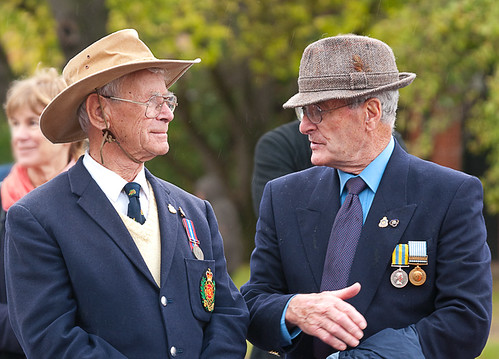 Here in Australia we have just finished a 5 day weekend. This year the Easter Weekend (normally 4 days) occured at the same time as the ANZAC Day public holiday.
Here in Australia we have just finished a 5 day weekend. This year the Easter Weekend (normally 4 days) occured at the same time as the ANZAC Day public holiday.
For the benefit of international readers ANZAC Day is a national day of rememberance for those who fought and died in war. It commemorates the day that the Australian and New Zealand Army Corp landed at Gallipolli in Turkey – 25 April 1915.
They lost a lot of men in that campaign and eventually were forced to withdraw. But it is still a major ritual and observance on the national calendar.
When combined with various Christian celebrations over the Easter feast, the value of ritual in maintaining and transmitting culture has been been very strongly re-enforced this weekend.
If we want to promote a culture of resilience within our organisations we are going to need to establish some rituals that are applicable to that culture. Rituals can be used to create a sense of shared identity. In psychology the term can also be applied to a set repetative behaviours that are used to reduce anxiety.
I would suggest the most obvious ritual would be to conduct rigourous simulation exercises to help develop crisis readiness and an adaptive response. This could easily fit into the meaning of reducing anxiety about crisis management. It can also hold to bond a Crisis Management Team.
You cannot establish a ritual if the activity is only done on a very irregular basis, it needs to be established as something that is done as part of the routine, and is clearly endorsed by those in authority as being important.
Prime Ministers, Governors and Cabinet Ministers all seek to participate in the ANZAC Day rituals. If your Senior Executives are not fully engaged, and leading the rituals, then they will not have the same cohesive benefit.
Make the debrief and lessons learned from the exercise an important part of the ritual. I have seen good value achieved by clients who have produced short videos that captured the value of the simulation experience and clearly articulated the learnings. A video is easy to distribute and gets a lot more attention than a boring report.
It is also a very powerful symbolic message to see the top Executives in the video promoting the benefits and learnings that have been derived.
Another activity that I would suggest as a ritual you could establish is to conduct formal debriefs and case studies on ‘near misses’ that occur in your organisations – or their close partners.
This does not require a massive investment of time and people, but needs to be done in a timely manner. You need to get the debrief done while the incident and the learnings are fresh in people’s minds. Writing the case study can be a good way to draw out the learnings, and to keep the experience of the ”near miss” available for future reference.
Making it a ritual means that people will expect to do it, and indeed want to be part of it – it cannot be something that is imposed and a burden. Then it is simply done to satisfy a compliance objective.
What other rituals are people using to promote resilience?
Leave a Reply